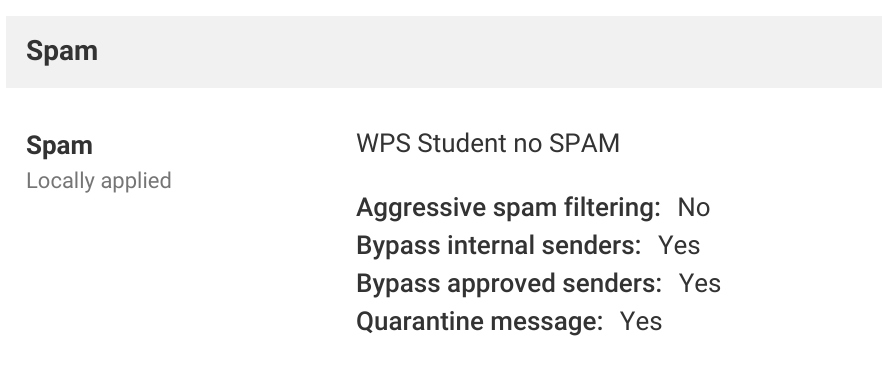Fairly recently Quarantine Manager was introduced to Google Apps. This is a tool that works alongside SPAM filtering, objectionable content and content compliance rules you may have setup. Essentially the Quarantine Manager holds messages that fall into the categories you have defined for administrators to view before approving or rejecting the messages.
We have used this to block all SPAM messages going to students. This is a brief look at how to set it up. Please note, it is very important to have authenticated email setup - this prevents things like group notifications every ending up in SPAM.
We have used this to block all SPAM messages going to students. This is a brief look at how to set it up. Please note, it is very important to have authenticated email setup - this prevents things like group notifications every ending up in SPAM.
Step 1 - define some Quarantine Names
Head to email settings. You will find 'Manage Quarantines' below 'Authenticated email' near the bottom:
Click on 'ADD' - top left
Give the quarantine a name and description of what it is going to do. Decide if you just want to drop the message or send a rejection email. See example below:
This in itself does nothing - you have to link it to a compliance rule.
Step 2 - link to a compliance rule
Next go to 'User Setting' in the Gmail admin console. Select the sub-OU you want to apply the rule to and the type of compliance. In the example below I'm defining a SPAM policy - but it could be content compliance or objectionable content.
Select edit:
Click the box at the bottom and choose the Quarantine you created. Click save and save again (appears bottom right).
This will Quarantine all SPAM (or whatever messages you set up) from this point on. Messages received prior to the rule being set up are not affected. However, SPAM folders are automatically cleared every 30 days - so within that time frame users SPAM folders will always be empty.
Step 3 - Review Quarantined messages
There you can select all the Quarantines you have set up - and allow messages if appropriate.
I've blanked out the usernames - but you can see the typical rubbish people get. These few steps prevent them from ever seeing any of it. The messages also still appear in Vault if you ever need to find them.





Comments
Post a Comment